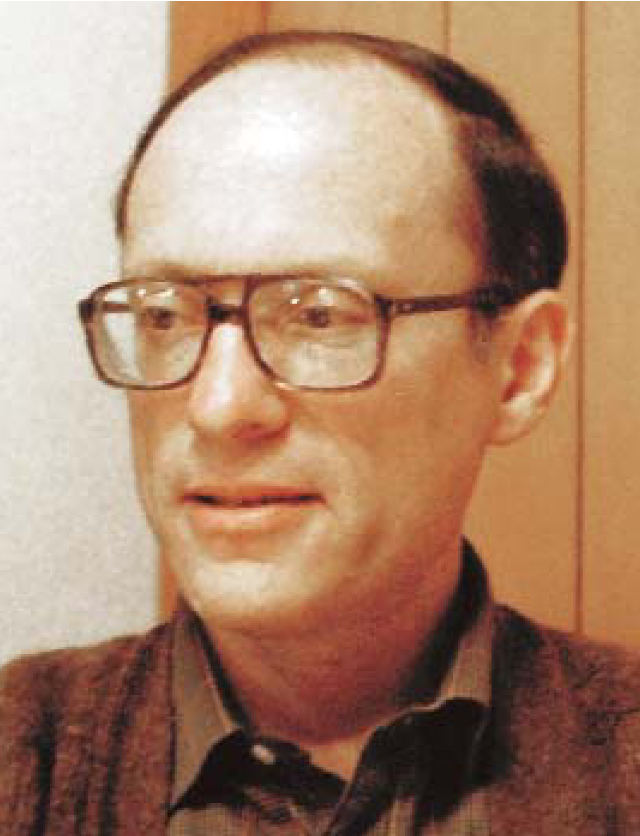Donald Maurice Ginsberg
DOI: 10.1063/1.2897959
Donald Maurice Ginsberg, a world authority on superconductivity, passed away peacefully on 7 May 2007 at his residence in Urbana, Illinois.
Ginsberg was born 19 November 1933 in Chicago. At the University of Chicago, he received both a BA in liberal arts in 1952 and a BS in physics in 1955. He joined the department of physics at the University of Illinois at Urbana-Champaign in 1959, immediately after finishing his graduate work with Michael Tinkham at the University of California, Berkeley; the title of his thesis was “Far Infrared Transmission Through Superconducting Films.”
Ginsberg’s research was in superconductivity, and beginning in the late 1950s, he played a major role in almost every fundamental aspect of the field. Building on his far-IR graduate experience, he helped develop planar quasiparticle tunneling spectroscopy as a vital probe of the energy gap of metallic superconductors. Through a wide variety of measurements, including electronic transport, thermal conductivity, specific heat, and magnetic susceptibility, he contributed greatly in the 1970s to the understanding of the effects of magnetic and nonmagnetic impurities on the electronic structure of superconductors. In the 1980s he focused on the molybdenum chalcogenides, perhaps the most complex superconducting materials known at the time.
Following the discovery of cuprate superconductors in 1986, Ginsberg was quick to reorient his lab in that direction. After trying every published recipe for creating good samples, he was dissatisfied, so he finally developed his own approach. He claimed that the most important hint for the best recipe came from a chance airport encounter with a colleague. His samples of yttrium barium copper oxide were universally acknowledged at the time to be the world’s finest. Because of the sensitivity of d-wave superconductivity to impurities, the advance in sample quality was essential for a series of fundamental experiments that established several novel effects, including fluctuation effects. With a group led by one of us (Van Harlingen), Ginsberg established the d-wave symmetry of the superconducting state. But not only did he make careful transport and equilibrium thermodynamic measurements, he generously shared his unique crystals with colleagues at numerous institutions around the world despite the intense competition in the field.
For the past four decades, Ginsberg authored the Encyclopaedia Britannica’s article on superconductivity. He also wrote several influential review articles and book chapters, starting with his review, with L. Charles Hebel, on non-equilibrium properties of superconductors, which was published in the seminal two-volume set Superconductivity (Marcel Dekker, 1969). Beginning in the late 1980s, he edited the definitive five-volume series Physical Properties of High Temperature Superconductors (World Scientific), to which he also contributed. In addition, he published more than 240 papers with many hundreds of coauthors from two dozen domestic and foreign institutions.
For his work on high-temperature superconductivity, Ginsberg received the 1998 Oliver E. Buckley Condensed Matter Prize of the American Physical Society, which he shared with Van Harlingen and with John Kirtley and Chang Tsuei of the IBM Thomas J. Watson Research Center. Among his other honors were a Sloan Foundation Research Fellowship and Illinois’s Tau Beta Pi Daniel C. Drucker Eminent Faculty Award and University Scholars Program award.
At Illinois, Ginsberg was widely recognized for outstanding classroom teaching. Thirty-six PhD students did their research under his direction. A resourceful and clever physicist with a uniquely multifaceted personality, he was equally appreciated for his science and for his wide range of interests and his direct and often humorous way of expressing his thoughts.
Ginsberg enjoyed the cultural side of life—especially poetry, which he wrote, and music, which he indulged by playing the flute. After his retirement in 1996, he wrote several books of poetry featuring his whimsical observations of physics, physicists, and his personal life. No event was too small to be lampooned by his fiendishly dry wit and droll turn of phrase. In considering his own long career at Illinois, Ginsberg remarked simply to a colleague, “When they ask about the old days, just tell them we had a good time.”

Donald Maurice Ginsberg

More about the Authors
Nigel Goldenfeld. University of Illinois at Urbana-Champaign, US.
Laura Greene. University of Illinois at Urbana-Champaign, US.
Miles Klein. University of Illinois at Urbana-Champaign, US.
Dale Van Harlingen. University of Illinois at Urbana-Champaign, US.
Thomas Lemberger. Ohio State University, Columbus, US.
